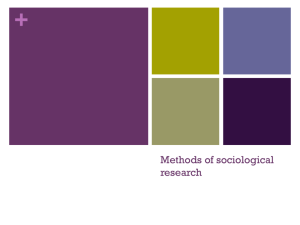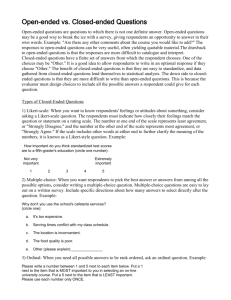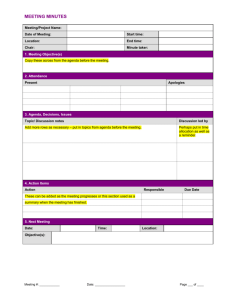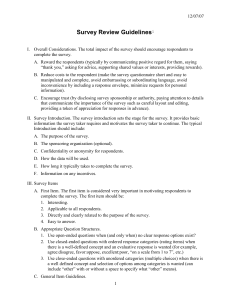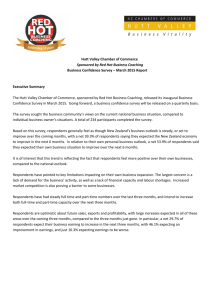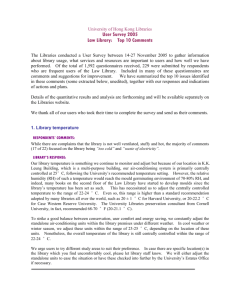Top 12 Survey Best Practices
advertisement
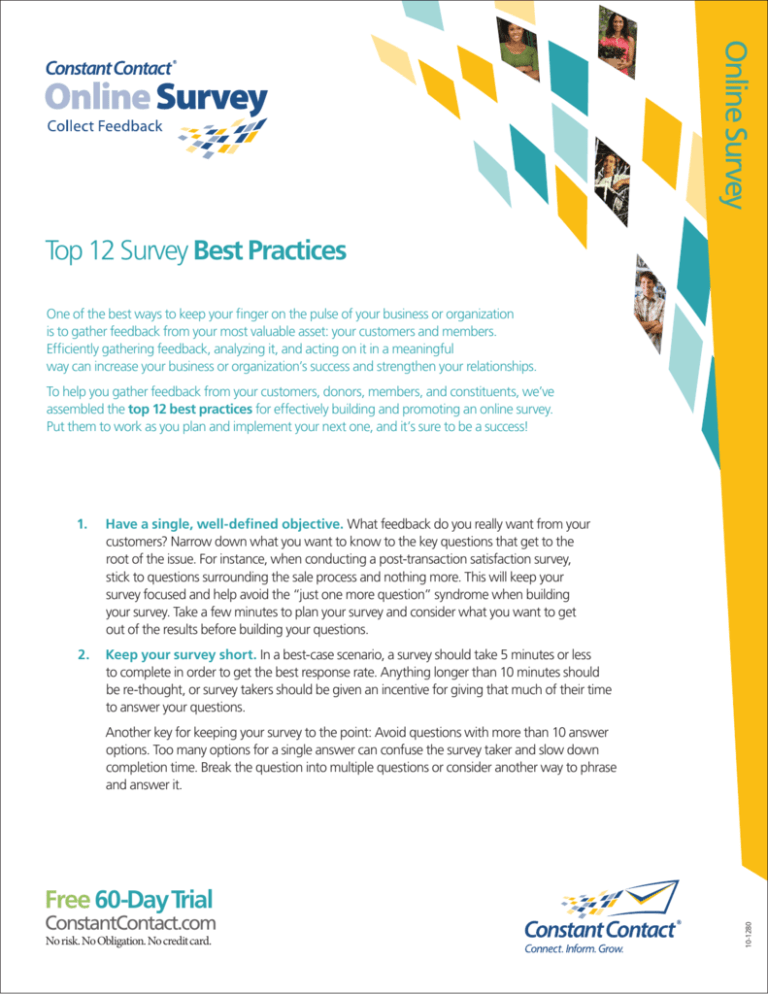
Online Survey Top 12 Survey Best Practices One of the best ways to keep your finger on the pulse of your business or organization is to gather feedback from your most valuable asset: your customers and members. Efficiently gathering feedback, analyzing it, and acting on it in a meaningful way can increase your business or organization’s success and strengthen your relationships. To help you gather feedback from your customers, donors, members, and constituents, we’ve assembled the top 12 best practices for effectively building and promoting an online survey. Put them to work as you plan and implement your next one, and it’s sure to be a success! 1.Have a single, well-defined objective. What feedback do you really want from your customers? Narrow down what you want to know to the key questions that get to the root of the issue. For instance, when conducting a post-transaction satisfaction survey, stick to questions surrounding the sale process and nothing more. This will keep your survey focused and help avoid the “just one more question” syndrome when building your survey. Take a few minutes to plan your survey and consider what you want to get out of the results before building your questions. 2.Keep your survey short. In a best-case scenario, a survey should take 5 minutes or less to complete in order to get the best response rate. Anything longer than 10 minutes should be re-thought, or survey takers should be given an incentive for giving that much of their time to answer your questions. nother key for keeping your survey to the point: Avoid questions with more than 10 answer A options. Too many options for a single answer can confuse the survey taker and slow down completion time. Break the question into multiple questions or consider another way to phrase and answer it. ConstantContact.com No risk. No Obligation. No credit card. 10-1280 Free 60-Day Trial Online Survey 3.Design your survey for easily measurable results. The key is to ask closed-ended questions that generate results that are easy to analyze, spot trends, and set base lines. A good example of a closed ended question is: What service(s) of ours do you use? a) Massage b) Hair Stylist c) Nails Using too many open-ended questions that require respondents to type out responses (i.e., “What do you like about our salon?”) will take time to read, code, and trend. Plus, they make for a longer survey completion time. Closed-ended questions make it easy for the survey taker to whisk through the questions and give you easily quantifiable data. 4.Ask one thing per question. Seems simple enough, but it’s an easy trap to fall into when compiling questions. Avoid such inquiries as “Do you like pizza and ice cream?” These are two unrelated subjects and should be broken into separate questions that will allow survey takers to answer both independently. Make sure to give respondents a full opportunity to answer the question with an “Other”, “Prefer Not to Answer”, or “Not Applicable” option where necessary. These answers, while vague, can provide better insight than a non-answer. Note: When giving an option of “Other,” it’s best to provide a text box for write-in answers. 5.Avoid biasing the response. Ask questions in a manner that doesn’t trend answers in a particular way. For instance, when gauging a customer’s likelihood of referring your business to friends, use a scale that ranges from “not very” to “extremely” with a few options in between. Avoid using “Always” or “Never” extremes as they can bias responses in the opposite direction. 6.Limit required questions. Too many required questions in a survey can ruin the flow and likely decrease your response rate. We recommend making required questions only those that you absolutely need to make a business decision. ConstantContact.com No risk. No Obligation. No credit card. 10-1280 Free 60-Day Trial Online Survey 7.Question order matters. The first question or two should be easy and interesting to engage the respondent and get them into the flow of the survey. Place profile or demographic related questions at the end of the survey to avoid scaring people off. If a person has taken the time to answer all your questions first, they are more likely to provide at least some of their profile information at the end. 8.Create a logical flow. Group questions that cover similar topics together and use text boxes to introduce each section of the survey. Page breaks should be used to break up longer surveys to prevent what seems like an endless scroll of questions. A side benefit to page breaks is that they provide for an auto-save of prior responses every time someone clicks on them. 9.Test the survey. Once you’ve completed building your survey, send it to a couple of trusted associates for testing purposes. Have them time how long it takes to complete and provide feedback on the overall flow of the survey. You can also check on the test entries to ensure the answers’ format will provide useful data. 10.Spell out time expectations in your invite and on the greeting page. When using an email survey invitation or a survey greeting page, tell the audience why you’re asking these questions, provide an estimated completion time, and explain what you will be doing with the data collected. Make the invite about the customer/survey taker by using “you” pronouns in your text. 11.Get it in front of the right people. To get the most out of your survey efforts, you have to get the right people to take it, thereby providing the feedback about your organization that you’re looking for. Your objective and how well you know your customers will determine the appropriate audience for your survey. For a good response rate, we recommend sending it to the segment of your audience that will care most about the topic(s). 12.Share the results and actions with respondents. Once the survey is complete and the data is collected and analyzed, let the respondents know what you’ve learned and what actions you’ll be taking as a result. Following up with respondents (and customers in general) helps validate your relationship with them and sends the message that their opinions make a difference. When customers feel like a part of a business, they’re more likely to provide feedback in the future. ConstantContact.com No risk. No Obligation. No credit card. 10-1280 Free 60-Day Trial


